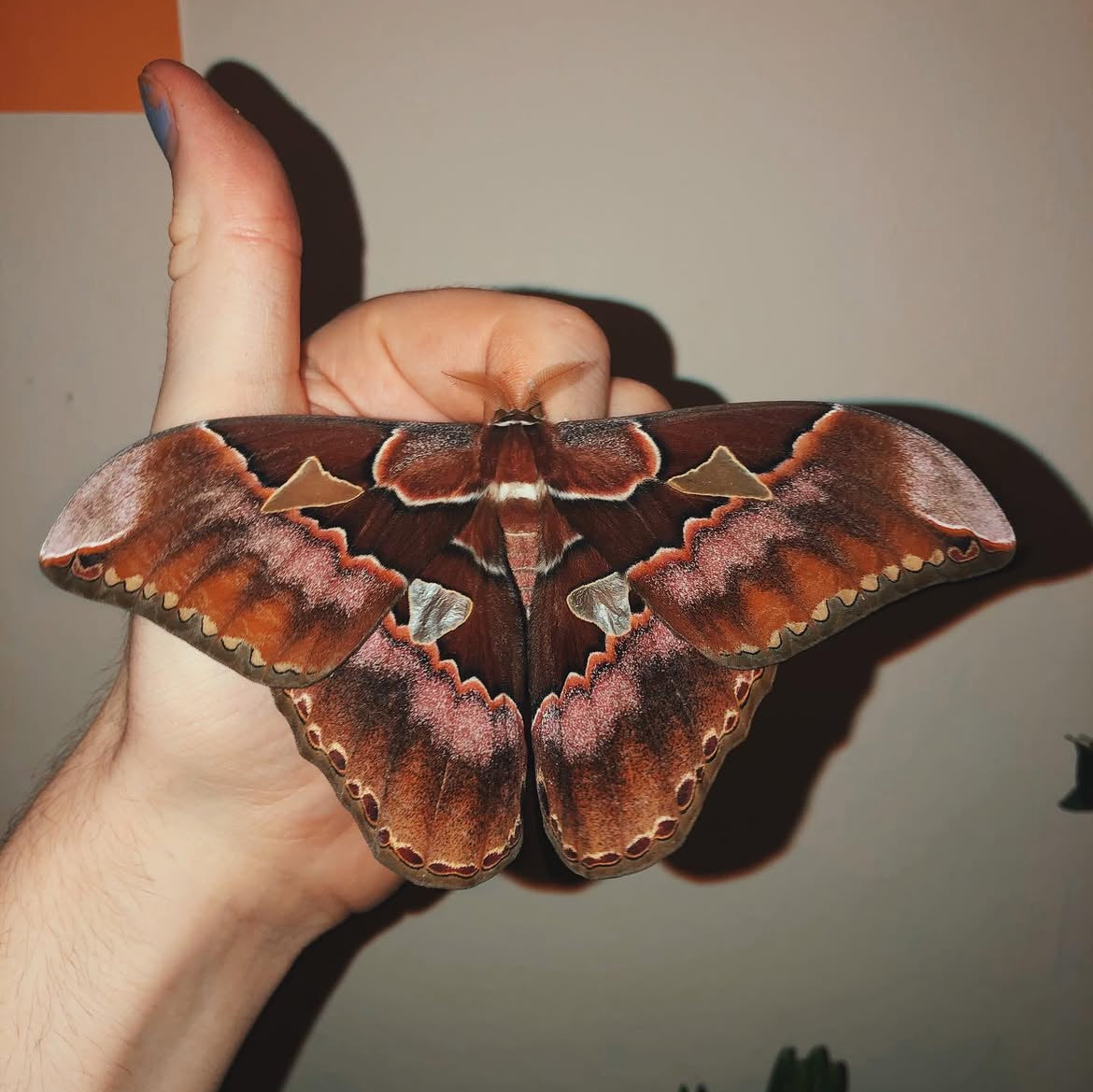Bugs & Butterflies UK
Orizaba Silk-Moth COCOONS (Rothschildia orizaba ecuatorialis)
Orizaba Silk-Moth COCOONS (Rothschildia orizaba ecuatorialis)
Couldn't load pickup availability
We expect the next brood of eggs in December/January and cocoons in February/March.
Rothschildia orizaba (Westwood, 1854) is a beautiful, richly coloured and very large species of the Rothschild's Atlas Moth family from Central and South America. It has quite a large distribution as far south as Ecuador, but does not extend as far northwards as species like lebeau or cincta which occur in the USA (comparatively, orizaba's range ends half way up Mexico), suggesting it may prefer a slightly warmer climate. This species is easily reared in captivity on host plants like Privet or Ivy (both evergreens) or Sweetgum, first in plastic containers before switching to mesh enclosures in L4/5. Larvae seem to benefit from humidity and can be observed drinking water droplets from the surface of leaves when misted lightly, but avoid allowing condensation to build up in containers. Caterpillars begin to pupate after 5-6 weeks, growing to an impressive size prior to spinning a tough silk cocoon among host plant leaves. Kept warm and humid these cocoons will produce adults in a month or two, but they can go dormant during periods of cool and/or dry weather. The adults have striking patterns in rich shades of red-brown and are easily one of the largest Rothschildia species.
Host plants: Privet (Ligustrum), Lilac (Syringa), Ivy (Hedera helix), Sweetgum (Liquidambar).
Difficulty: Straightforward (2/10)
Temperature: A warm room ideally (22-26 daytime temperature)
Life-cycle: Continually brooded but may go into dormancy when conditions unsuitable.
Share















